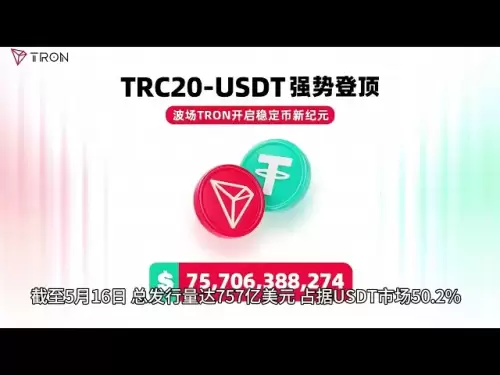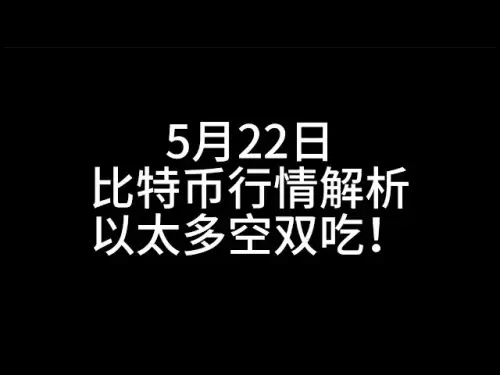-
 Bitcoin
Bitcoin $110,499.0060
2.46% -
 Ethereum
Ethereum $2,607.6248
0.32% -
 Tether USDt
Tether USDt $1.0001
-0.01% -
 XRP
XRP $2.3951
0.64% -
 BNB
BNB $679.6251
2.84% -
 Solana
Solana $175.8300
2.75% -
 USDC
USDC $0.9998
-0.01% -
 Dogecoin
Dogecoin $0.2379
2.55% -
 Cardano
Cardano $0.7866
2.89% -
 TRON
TRON $0.2724
0.08% -
 Sui
Sui $4.0281
3.10% -
 Chainlink
Chainlink $16.2575
1.36% -
 Hyperliquid
Hyperliquid $30.4803
14.90% -
 Avalanche
Avalanche $23.9962
4.87% -
 Stellar
Stellar $0.2971
1.93% -
 Shiba Inu
Shiba Inu $0.0...01503
1.29% -
 Hedera
Hedera $0.2002
1.14% -
 Bitcoin Cash
Bitcoin Cash $414.1972
3.42% -
 UNUS SED LEO
UNUS SED LEO $8.8661
0.63% -
 Toncoin
Toncoin $3.1343
1.49% -
 Polkadot
Polkadot $4.7879
0.69% -
 Litecoin
Litecoin $97.9464
2.04% -
 Monero
Monero $394.9965
8.18% -
 Bitget Token
Bitget Token $5.2536
0.97% -
 Pi
Pi $0.8316
2.07% -
 Pepe
Pepe $0.0...01384
-0.70% -
 Dai
Dai $0.9999
-0.02% -
 Ethena USDe
Ethena USDe $1.0006
-0.01% -
 Bittensor
Bittensor $471.6708
11.25% -
 Uniswap
Uniswap $6.3001
-2.52%
Can BOLL and wave theory work together? How to use channels to determine wave types?
Bollinger Bands and Elliott Wave Theory can enhance trading by confirming wave patterns and market trends when used together.
May 22, 2025 at 10:42 am
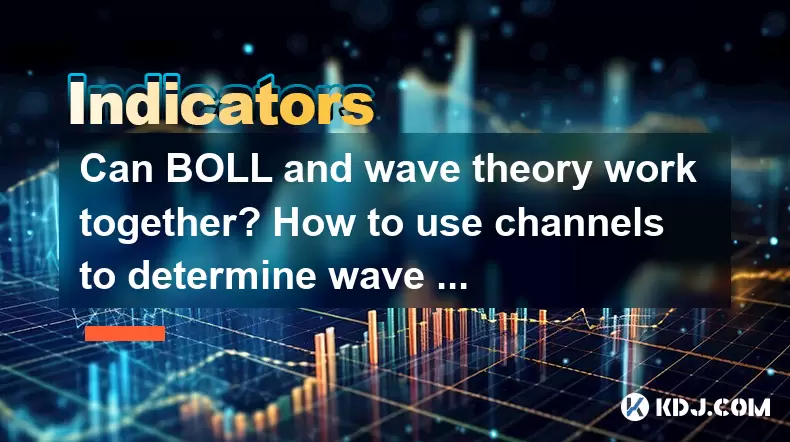
Introduction to BOLL and Wave Theory
The Bollinger Bands (BOLL) and Elliott Wave Theory are two popular analytical tools used within the cryptocurrency trading community. Bollinger Bands are a technical analysis tool developed by John Bollinger, designed to provide a relative definition of high and low prices of a market. On the other hand, Elliott Wave Theory is a method of technical analysis that traders use to analyze financial market cycles and forecast market trends by identifying extremes in investor psychology, highs and lows in prices, and other collective factors.
Understanding Bollinger Bands
Bollinger Bands consist of a middle band being an N-period simple moving average (SMA), an upper band at K times an N-period standard deviation above the middle band, and a lower band at K times an N-period standard deviation below the middle band. The standard setting for Bollinger Bands is a 20-day period and two standard deviations. These bands expand and contract based on the volatility of the price, providing traders with insights into potential overbought or oversold conditions.
Basics of Elliott Wave Theory
Elliott Wave Theory suggests that markets move in repetitive cycles, which are influenced by investors' psychology. These cycles are composed of impulsive waves and corrective waves. Impulsive waves move in the direction of the larger trend and consist of five smaller waves, while corrective waves move against the larger trend and are made up of three smaller waves. Identifying these waves helps traders predict future price movements.
Combining BOLL and Wave Theory
Combining Bollinger Bands with Elliott Wave Theory can provide traders with a more robust framework for analyzing market trends. When prices reach the upper Bollinger Band, it could indicate the end of an impulsive wave and the beginning of a corrective wave. Conversely, when prices hit the lower Bollinger Band, it might signal the completion of a corrective wave and the start of a new impulsive wave. By integrating these tools, traders can enhance their understanding of market dynamics and improve their trading strategies.
Using Channels to Determine Wave Types
Channels are another useful tool in technical analysis, particularly when determining wave types in Elliott Wave Theory. Channels are drawn parallel to the trend line connecting the highs or lows of the waves. There are two types of channels commonly used: parallel channels and expanding channels.
- Parallel Channels: These are drawn by connecting the highs and lows of the waves with parallel lines. In an uptrend, the channel will be drawn from the lows of wave 2 to the lows of wave 4, and from the highs of wave 1 to the highs of wave 3. In a downtrend, the channel will be drawn from the highs of wave 2 to the highs of wave 4, and from the lows of wave 1 to the lows of wave 3.
- Expanding Channels: These are drawn by connecting the highs and lows of the waves with lines that diverge. This type of channel is often used in corrective waves, where the price movement becomes more volatile.
Applying Channels to Identify Wave Types
To effectively use channels to determine wave types, follow these steps:
- Identify the trend: Determine whether the market is in an uptrend or a downtrend. This will help you decide which type of channel to use.
- Draw the trend line: Connect the lows of wave 2 and wave 4 in an uptrend, or the highs of wave 2 and wave 4 in a downtrend.
- Draw the parallel line: Draw a parallel line to the trend line, connecting the highs of wave 1 and wave 3 in an uptrend, or the lows of wave 1 and wave 3 in a downtrend.
- Analyze the price movement: Observe how the price interacts with the channel. If the price consistently touches the upper and lower boundaries of the channel, it confirms the validity of the channel and the identified wave types.
- Adjust the channel: If the price breaks out of the channel, adjust the channel accordingly to reflect the new trend or wave pattern.
Integrating BOLL with Channel Analysis
Combining Bollinger Bands with channel analysis can provide additional insights into wave types. When the price reaches the upper Bollinger Band and the upper boundary of the channel, it could indicate the end of an impulsive wave. Similarly, when the price hits the lower Bollinger Band and the lower boundary of the channel, it might signal the completion of a corrective wave. This integration helps traders confirm their wave analysis and make more informed trading decisions.
Practical Example of BOLL and Channel Analysis
Consider a hypothetical scenario where the price of a cryptocurrency is in an uptrend. The price has recently touched the upper Bollinger Band and the upper boundary of the parallel channel. This could indicate the end of wave 3 and the beginning of wave 4, a corrective wave. Traders can use this information to adjust their trading strategies, such as taking profits or preparing for a potential pullback.
Detailed Steps for Using BOLL and Channels in Trading
To effectively use Bollinger Bands and channels in your trading strategy, follow these detailed steps:
- Set up your charting software: Ensure that your charting software supports Bollinger Bands and allows you to draw custom channels.
- Apply Bollinger Bands: Add Bollinger Bands to your chart with the standard settings of a 20-day period and two standard deviations.
- Identify the trend: Use trend lines and other technical indicators to determine whether the market is in an uptrend or a downtrend.
- Draw the channel: Based on the trend, draw a parallel or expanding channel by connecting the appropriate highs and lows of the waves.
- Monitor price interactions: Observe how the price interacts with both the Bollinger Bands and the channel. Look for instances where the price touches the upper or lower Bollinger Band and the channel boundaries simultaneously.
- Confirm wave types: Use the interactions between the price, Bollinger Bands, and channels to confirm the wave types. For example, if the price touches the upper Bollinger Band and the upper channel boundary, it could confirm the end of an impulsive wave.
- Adjust your strategy: Based on your analysis, adjust your trading strategy accordingly. This might involve taking profits, entering new positions, or preparing for potential reversals.
Frequently Asked Questions
Q: Can Bollinger Bands be used to predict the exact start and end of Elliott waves?
A: While Bollinger Bands can provide insights into potential overbought or oversold conditions, they cannot predict the exact start and end of Elliott waves with precision. They are best used as a tool to confirm wave patterns and enhance the analysis provided by Elliott Wave Theory.
Q: Are there specific timeframes that work best when combining BOLL and Elliott Wave Theory?
A: The effectiveness of combining Bollinger Bands and Elliott Wave Theory can vary depending on the timeframe used. Shorter timeframes may provide more frequent signals but can be more prone to false positives. Longer timeframes may offer more reliable signals but could result in fewer trading opportunities. Traders should experiment with different timeframes to find what works best for their trading style.
Q: How can I improve my accuracy when using channels to determine wave types?
A: To improve accuracy when using channels to determine wave types, it's essential to practice and refine your skills over time. Additionally, consider using other technical indicators, such as Fibonacci retracements and RSI, to confirm your channel analysis. Regularly reviewing past trades and adjusting your approach based on what you learn can also enhance your accuracy.
Q: Can the same channel be used for both impulsive and corrective waves?
A: While the same channel can be used for both impulsive and corrective waves, it's often more effective to use different types of channels for each. Parallel channels are typically used for impulsive waves, while expanding channels are more suitable for corrective waves. This approach helps to better reflect the different price movements associated with each type of wave.
Disclaimer:info@kdj.com
The information provided is not trading advice. kdj.com does not assume any responsibility for any investments made based on the information provided in this article. Cryptocurrencies are highly volatile and it is highly recommended that you invest with caution after thorough research!
If you believe that the content used on this website infringes your copyright, please contact us immediately (info@kdj.com) and we will delete it promptly.
- Solana Price Rises Above $172
- 2025-05-22 15:20:13
- A Crypto Whale Has Expanded an Existing 40x Leverage Long Bitcoin Bet to $1.1 Billion
- 2025-05-22 15:20:13
- Will Cardano Price Crash if Bitcoin Integration Fails to Gain Traction?
- 2025-05-22 15:15:13
- A crypto whale has expanded an existing 40x leverage long Bitcoin bet to $1.1 billion
- 2025-05-22 15:15:13
- Bitcoin price hits all-time high, eclipsing previous peak from January
- 2025-05-22 15:10:13
- Bitcoin (BTC) breaks through $100,00 for the first time, setting a fresh all-time high
- 2025-05-22 15:10:13
Related knowledge
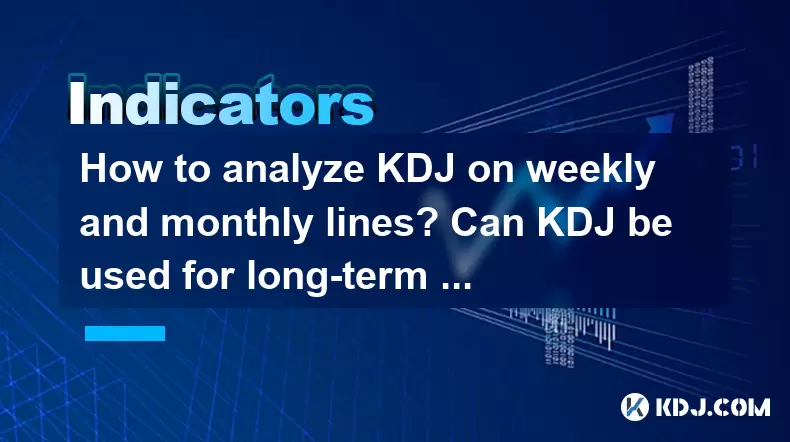
How to analyze KDJ on weekly and monthly lines? Can KDJ be used for long-term operations?
May 22,2025 at 02:21pm
Analyzing the KDJ indicator on weekly and monthly lines is a valuable skill for traders interested in long-term cryptocurrency operations. The KDJ, also known as the Stochastic Oscillator, is a momentum indicator that compares a closing price of a cryptocurrency to its price range over a certain period. By applying the KDJ to weekly and monthly timefram...
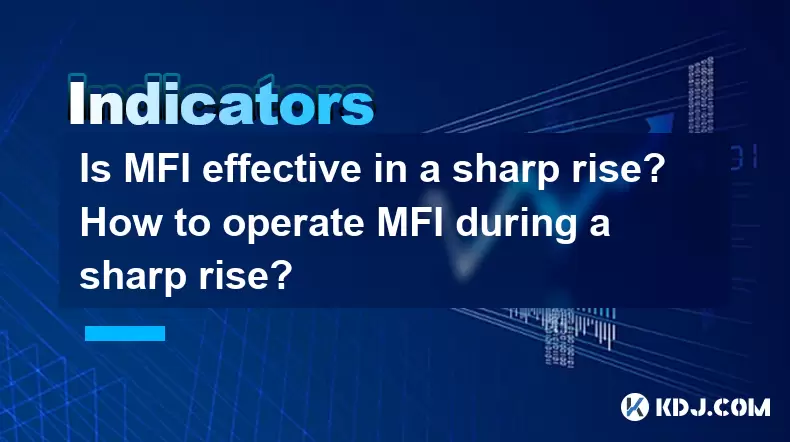
Is MFI effective in a sharp rise? How to operate MFI during a sharp rise?
May 22,2025 at 02:07pm
Is MFI effective in a sharp rise? How to operate MFI during a sharp rise? The Money Flow Index (MFI) is a popular technical indicator used by traders to gauge the strength of money flowing in and out of a security. It is particularly useful in identifying overbought and oversold conditions in the market. In this article, we will explore the effectivenes...
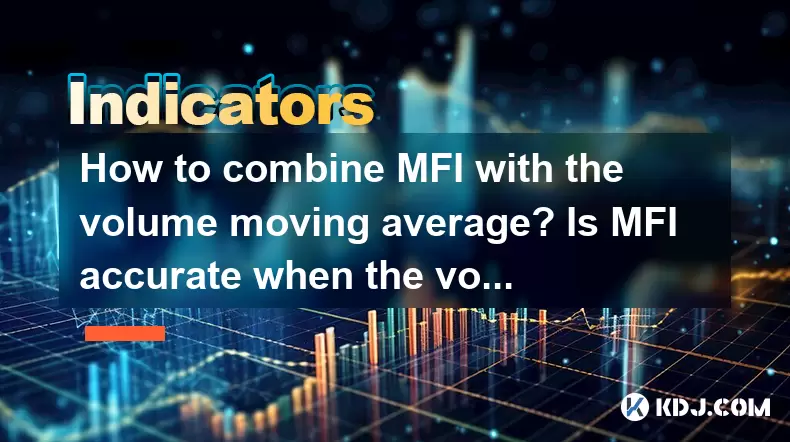
How to combine MFI with the volume moving average? Is MFI accurate when the volume changes?
May 22,2025 at 03:43pm
Combining the Money Flow Index (MFI) with the Volume Moving Average (VMA) can provide traders with a more comprehensive view of market trends and potential trading opportunities. The MFI is a momentum indicator that measures the inflow and outflow of money into a security over a specific period, while the VMA helps smooth out volume data to identify tre...
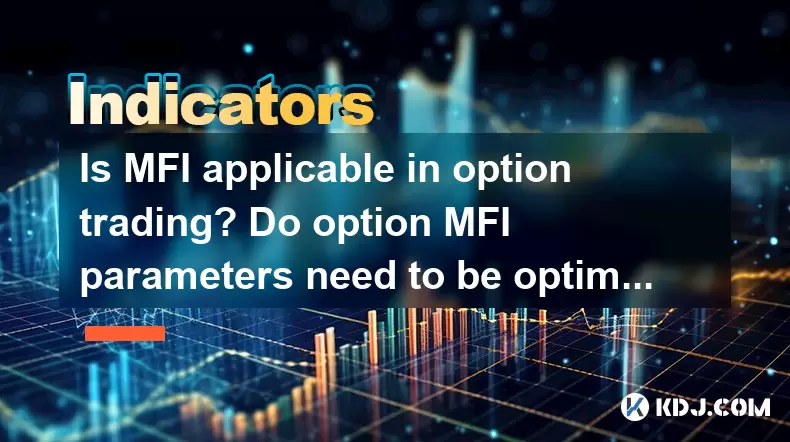
Is MFI applicable in option trading? Do option MFI parameters need to be optimized?
May 22,2025 at 02:15pm
The Money Flow Index (MFI) is a popular technical indicator used by traders to gauge the strength of money flowing in and out of a security. While the MFI is commonly applied to stocks and other financial instruments, its applicability in option trading is a topic of interest for many traders. In this article, we will explore whether MFI can be effectiv...
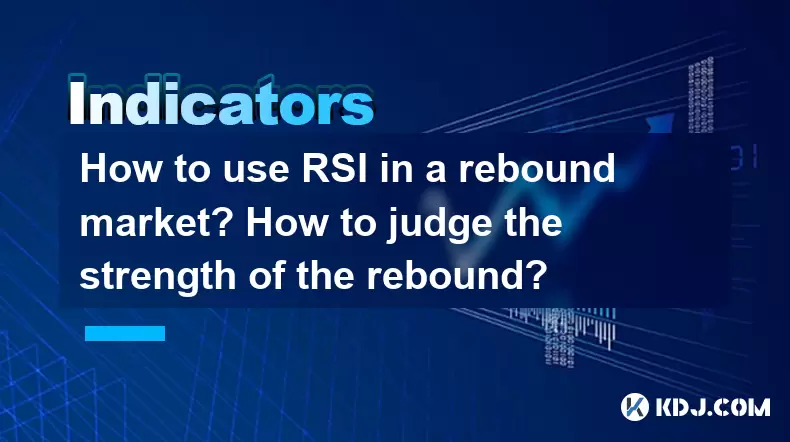
How to use RSI in a rebound market? How to judge the strength of the rebound?
May 22,2025 at 08:07am
The Relative Strength Index (RSI) is a momentum oscillator that measures the speed and change of price movements. It is widely used in the cryptocurrency market to identify overbought or oversold conditions, which can be particularly useful in a rebound market. In this article, we will explore how to effectively use the RSI in a rebound market and how t...
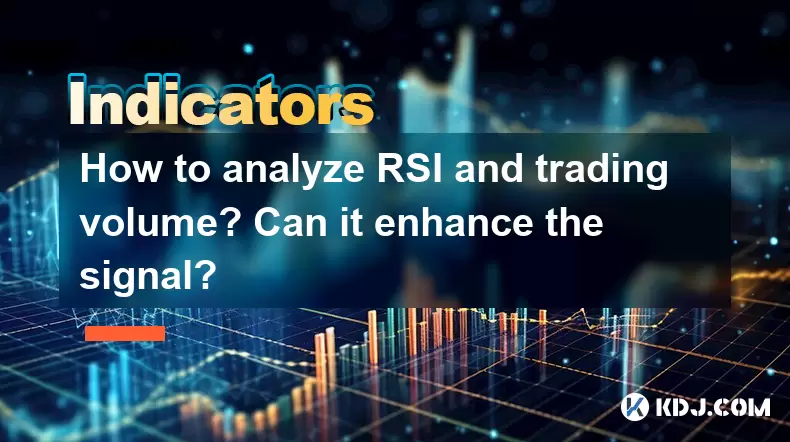
How to analyze RSI and trading volume? Can it enhance the signal?
May 22,2025 at 01:14pm
Understanding how to analyze the Relative Strength Index (RSI) and trading volume can significantly enhance your trading signals within the cryptocurrency market. RSI is a momentum oscillator that measures the speed and change of price movements, while trading volume indicates the total number of shares or contracts traded within a specified time frame....

How to analyze KDJ on weekly and monthly lines? Can KDJ be used for long-term operations?
May 22,2025 at 02:21pm
Analyzing the KDJ indicator on weekly and monthly lines is a valuable skill for traders interested in long-term cryptocurrency operations. The KDJ, also known as the Stochastic Oscillator, is a momentum indicator that compares a closing price of a cryptocurrency to its price range over a certain period. By applying the KDJ to weekly and monthly timefram...

Is MFI effective in a sharp rise? How to operate MFI during a sharp rise?
May 22,2025 at 02:07pm
Is MFI effective in a sharp rise? How to operate MFI during a sharp rise? The Money Flow Index (MFI) is a popular technical indicator used by traders to gauge the strength of money flowing in and out of a security. It is particularly useful in identifying overbought and oversold conditions in the market. In this article, we will explore the effectivenes...

How to combine MFI with the volume moving average? Is MFI accurate when the volume changes?
May 22,2025 at 03:43pm
Combining the Money Flow Index (MFI) with the Volume Moving Average (VMA) can provide traders with a more comprehensive view of market trends and potential trading opportunities. The MFI is a momentum indicator that measures the inflow and outflow of money into a security over a specific period, while the VMA helps smooth out volume data to identify tre...

Is MFI applicable in option trading? Do option MFI parameters need to be optimized?
May 22,2025 at 02:15pm
The Money Flow Index (MFI) is a popular technical indicator used by traders to gauge the strength of money flowing in and out of a security. While the MFI is commonly applied to stocks and other financial instruments, its applicability in option trading is a topic of interest for many traders. In this article, we will explore whether MFI can be effectiv...

How to use RSI in a rebound market? How to judge the strength of the rebound?
May 22,2025 at 08:07am
The Relative Strength Index (RSI) is a momentum oscillator that measures the speed and change of price movements. It is widely used in the cryptocurrency market to identify overbought or oversold conditions, which can be particularly useful in a rebound market. In this article, we will explore how to effectively use the RSI in a rebound market and how t...

How to analyze RSI and trading volume? Can it enhance the signal?
May 22,2025 at 01:14pm
Understanding how to analyze the Relative Strength Index (RSI) and trading volume can significantly enhance your trading signals within the cryptocurrency market. RSI is a momentum oscillator that measures the speed and change of price movements, while trading volume indicates the total number of shares or contracts traded within a specified time frame....
See all articles
























